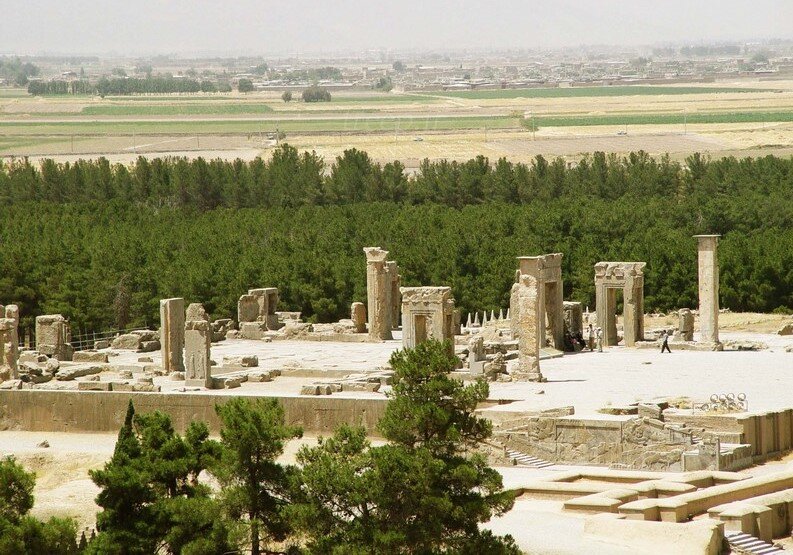Ecosystem of Marvdasht, once seat of power for Achaemenid Empire, souled be safeguarded: official

TEHRAN – The biome and ecosystem of Marvdasht plain, which is home to the UNESCO-registered sites of Persepolis and Pasargadae as well as tens of other magnificent structures, souled be safeguarded properly, the director of Persepolis site underlined on Wednesday.
“Paying attention to the ecosystem and natural capacities of the Marvdasht plain as a part of the landscape of the UNESCO-tagged Persepolis could be effective in developing tourism in the region,” Hamid Fadaei said.
The ecosystem of Marvdasht plain, which was once the seat of power for the Achaemenid Persian Empire (c. 550 – 330 BC) in southern Iran, has been one of the most important factors in the creation and development of several thousand years of civilization in this region, he explained.
That is why the remains of different settlements and cultures have been discovered during many excavations carried out in ancient hills and historical sites of the plain, the official added.
The protection of ancient water structures in Persepolis, applying clean transportation policies inside the UNESCO-tagged site, the site’s waste management to beautify the environment are parts of the measures taken to preserve the region’s ecosystem, he explained.
Persepolis, also known as Takht-e Jamshid, whose magnificent ruins rest at the foot of Kuh-e Rahmat (Mountain of Mercy), was the ceremonial capital of the Achaemenid Empire. It is situated 60 kilometers northeast of the city of Shiraz in Fars province.
The royal city of Persepolis, which ranks among the archaeological sites which have no equivalent, considering its unique architecture, urban planning, construction technology, and art, was burnt by Alexander the Great in 330 BC apparently as revenge to the Persians because it seems the Persian King Xerxes had burnt the Greek City of Athens around 150 years earlier.
The city’s immense terrace was begun about 518 BC by Darius the Great, the Achaemenid Empire’s king. On this terrace, successive kings erected a series of architecturally stunning palatial buildings, among them the massive Apadana palace and the Throne Hall (“Hundred-Column Hall”).
This 13-ha ensemble of majestic approaches, monumental stairways, throne rooms (Apadana), reception rooms, and dependencies is classified among the world’s greatest archaeological sites.
The ancient region, known as Pars (Fars), or Persis, was the heart of the Achaemenid Empire founded by Cyrus the Great and had its capital at Pasargadae. Darius I the Great moved the capital to nearby Persepolis in the late 6th or early 5th century BC. Alexander the Great defeated the Achaemenian army at Arbela in 331 and burned Persepolis apparently as revenge to the Persians because it seems the Persian King Xerxes had burnt the Greek City of Athens around 150 years earlier.
Persis became part of the Seleucid kingdom in 312 after Alexander’s death. The Parthian empire (247 BC– 224 CE) of the Arsacids (corresponding roughly to the modern Khorasan in Iran) replaced the Seleucids' rule in Persis during 170–138 BC. The Sasanid Empire (224 CE–651) had its capital at Istkhr. Not until the 18th century, under the Zand dynasty (1750–79) of southern Iran, did Fars again became the heart of an empire, with its capital at Shiraz.
ABU/AFM
Leave a Comment